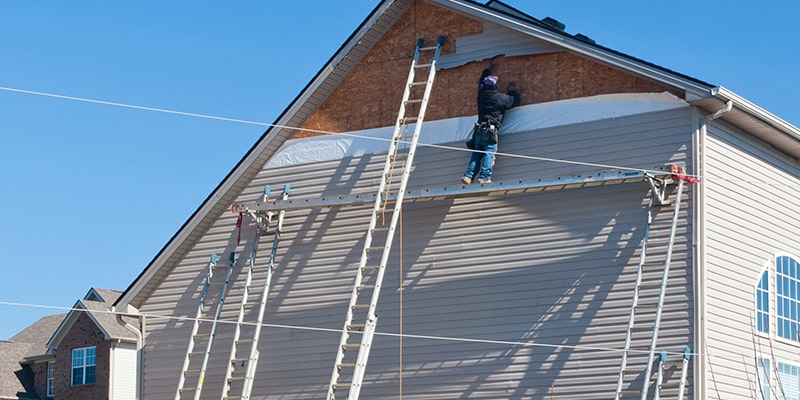When we plan a full home renovation, it is easy to focus on interior details such as flooring, cabinets, or lighting. However, roofing plays a bigger role than most people expect. A solid roof not only protects the structure but also sets the tone for exterior design, long term efficiency, and even the resale value of the property. In our work with Envirotech, we have seen how roofing upgrades blend naturally into whole home renovation projects when planned correctly.
Integrating Roofing with Exterior Design
Every home renovation needs balance between interior and exterior improvements. For example, upgrading a kitchen while leaving an aging roof untouched can make the entire project feel incomplete. Roofing upgrades contribute to curb appeal and durability at the same time. We recommend coordinating roof materials and colors with siding, windows, and landscaping choices so that the entire property feels consistent.
During exterior renovations, we also look at how the rooflines interact with architectural elements like porches or dormers. If you are considering a larger exterior remodel, planning roofing together with siding or window replacement ensures a seamless finish. You can learn more about thoughtful planning by reviewing our page on professional renovation services Calgary.
Timing Roofing Projects with Major Renovations
One challenge in full renovations is deciding when to schedule roofing work. Tackling roofing after interior remodeling can risk damage to freshly completed work inside. Dust, vibrations, and water infiltration from roof replacement can all affect new finishes if timing is not considered.
We prefer to schedule roofing upgrades early in the renovation timeline. Doing so protects the home from leaks during the rest of the project. It also means contractors working on other areas can do so in a secure, weather tight structure. Furthermore, roofing done upfront often saves money because it avoids repair costs linked to hidden leaks or structural weaknesses discovered later.
Energy Efficiency and Roofing Choices
A new roof impacts more than just appearance. The right roofing material and insulation strategy can dramatically improve energy performance. Proper ventilation reduces moisture buildup, while reflective shingles lower summer cooling costs. As a result, we always connect roofing decisions to the broader goal of energy efficiency in a renovation.
This is especially true in Calgary’s climate, where extreme cold and warm spells put pressure on roofing systems. Pairing attic insulation upgrades with roofing replacements ensures both comfort and reduced utility bills. For homeowners who want to take advantage of rebates or green initiatives, this combination often qualifies for financial incentives. To see how roofing fits into larger exterior projects, review our section on roofing services Calgary.
Long Term Value of Coordinated Upgrades
A home renovation is an investment, and coordinated roofing upgrades can extend the return on that investment. Buyers notice a new roof immediately, and lenders often value it as a safety feature. When paired with modernized interiors, the whole property feels newer, safer, and more attractive to the market.
Beyond resale, coordinated upgrades save homeowners from piecemeal expenses. For instance, replacing siding today and the roof next year often means paying twice for scaffolding or cleanup. By including the roof in a larger project, those costs are shared, making the overall budget more efficient. Moreover, addressing multiple systems together gives peace of mind, as everything is aligned with a single warranty period and maintenance plan.
Practical Tips for Planning Roofing in Renovations
To keep roofing upgrades effective within a renovation plan, we follow some guiding principles. First, we always assess the roof’s structural state early. This includes inspecting the deck, flashing, and ventilation to avoid surprises. Second, we make sure roofing contractors and interior teams share schedules, so work flows smoothly. Third, we align the roofing style with the home’s character rather than chasing short lived trends.
Finally, we encourage homeowners to consider future additions. For example, if a second floor expansion is possible in coming years, roofing choices should allow for adjustments without full replacement. These steps may seem small, but they prevent wasted money and ensure that roofing supports rather than complicates the broader project.
Maintenance Planning After Roofing Upgrades
Once roofing is upgraded during a renovation, planning ongoing maintenance is essential. New roofing materials often come with specific care requirements, and ignoring them can shorten their lifespan. We suggest creating a schedule for annual inspections, gutter cleaning, and attic ventilation checks. This way, the investment remains secure long after the renovation dust has settled.
Roofing maintenance also ties back to the whole home approach. For example, clogged gutters can damage siding and foundations, undoing other improvements. By connecting roofing care with broader home maintenance, we protect the entire renovation plan. If you are ready to move forward and want direct guidance on combining roofing upgrades with a full renovation, reach out through our contact us page.
FAQ
How do I know if my roof should be replaced during a renovation?
If your roof is older than 15 years, shows visible wear, or has leaked in the past, it is wise to consider replacement during renovation. Doing it together saves money and avoids disruption later.
Can I change my roofing material without altering other parts of my home?
Yes, but we recommend checking how the new material will look with siding, windows, and trim. A mismatch can reduce overall appeal, so coordination is key.
Does roofing really affect energy bills?
Absolutely. Proper roofing insulation and reflective materials can lower both heating and cooling costs. Ventilation also prevents moisture damage that could lead to costly repairs.
When is the best season for roofing work in Calgary?
Spring and summer are most common, but early fall can also work if weather is stable. Winter projects are possible with planning, but they often take longer.
Should roofing always be done before interior work?
In most cases, yes. Completing the roof first keeps the home secure and prevents damage to new finishes inside. It also gives contractors a stable environment to complete other renovations.

